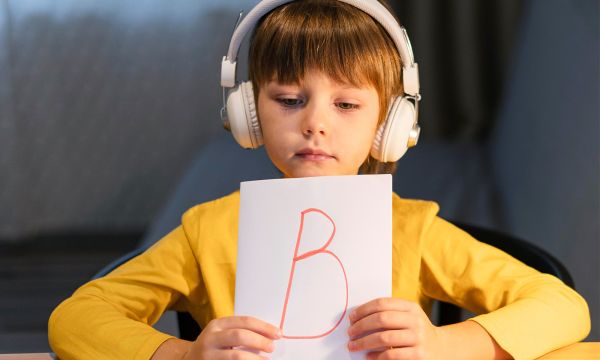
"I hate your guts❤️" - Emoji language, digital hate, and the lost empathy of adolescents
In the age of digital communication, we no longer shout; we send an emoji. Hate is no longer a catchphrase, but a colourful icon that is both playful and relentless. This article examines how the simplistic language of emojis influences our thinking, making aggression more invisible, and how adolescents learn to lose empathy without using words. This article was inspired by Netflix's hit and soul-sucking series Adolescence, which shows with brutal accuracy the world in which adolescents who no longer feel reality with words but with emojis grow up.

Behind the smiling face
The digitalisation of communication has radically transformed human relations over the past two decades. Language has become simpler, sentences have become shorter, and words are increasingly replaced by tiny symbols: emojis, which have become a natural part of almost every message, comment, or post. These tiny visual signs - colourful, simple, often playful - may seem innocuous at first glance, but their psychological and sociolinguistic impact goes far beyond first impressions.
While at first glance it may seem that visual communication is more prosperous, more emotion-centred, and universal, emojis are less and less conducive to nuanced emotional expression. Psycho-linguistic research also shows that the condensation - or rather flattening - of emotional nuances has serious consequences. Anger, sadness, sarcasm, or compassion are all condensed into a single character: 😡😢😂. This not only reduces linguistic depth but also emotional complexity, and genuine connection becomes less and less frequent.
Simplifying the expression of emotion into icons both desensitises the recipient and removes responsibility from the emoji's user. Anger is no longer anger, but an angry head (😡), sarcasm is no longer a linguistic twist, but a wink (😉), and grief is no longer a long sentence, but a crying face (😭). And more dangerously, hate is no longer what it used to be.
Psycho-linguistic short circuit
One of the basic tenets of psycho-linguistics is that language is not only a tool for thinking, but also a shaper of it. According to the Sapir-Whorf hypothesis, the language we use frames and shapes our view of reality. If our language becomes narrower, the world we see becomes narrower. If we attempt to express the world in symbols or simplified icons, our thinking is also reduced: nuances, ambiguities, and moral dilemmas are lost.
This reduction of language also reduces mental representations. The world becomes black and white: good vs bad, cringe vs cool, like vs dislike. There are no transitions, no dilemmas, and no more perspectives. This is particularly true in the online space, where the playfulness of symbols, the "but it's just an emoji" attitude, allows the communicator to become emotionally detached from the message. A laughing head (😂) after a hateful comment, or a bagel (🥯), moneybag (💰), or monkey emoji (🐒) following a reference to an ethnic minority, embedded in ironic humour, conveys a profound message of hate without any awareness of its responsibility. It is 'just a joke', 'just an emoji', 'just online slang'.
One of the most powerful - and most damaging - effects of using emojis is the creation of moral and emotional distance. Not only does the user visually abbreviate the thought, but they are also psychologically detached from the message. According to Albert Bandura's classic theory of moral self-justifying mechanisms, people can inflict pain on others if they keep it at some distance from their moral selves - for example, by using euphemisms, shifting responsibility, or relativizing consequences. The online space, and emojis in particular, provide an ideal environment for this. After all: no physical presence, no direct repercussions, no guilt if you "just put an emoji there". In other words, moral disengagement in communication is facilitated when hate is not explicitly stated but rather conveyed in a somewhat symbolic and playful manner.
Moreover, emojis not only express, but also gamify. The principles of gamification - quick feedback, low risk, and instant experience - have become a natural part of online communication. Social discourse has been simplified into reaction buttons, debates into laughing heads, and emotions into pictograms. The way social media works is also based on a fundamentally gamified logic. Likes, reactions, comments, and shares are all part of a kind of scoring game. In this game, the content with the most vigorous reaction wins, regardless of its moral quality. Emojis in this system not only express but also reward. A laughing head under a racist meme is not just a reaction, it's an affirmation. A coffee-cup emoji under an anti-female comment is not only an aesthetic addition, but also a clap, an acknowledgement. And because speed, spectacle, and impact matter in the online space, nuanced, reflexive communication that requires empathy is at a disadvantage. Empathetic conversations don't get likes. Hate, on the other hand, if it's punchy enough and visually well packaged, goes viral.
It is hazardous when hate takes a gamified form: it is easier to send an 💩 or 🤡 emoji to an unknown, dissenting commenter than to make a substantive criticism. Stereotyping an ethnic group or a minority is "fun" if it is done with emojis: the community reacts, you laugh, you get a flame🔥 or a heart❤️ . And the algorithms of online platforms reward this dynamic: divisive, hateful content generates interaction, and the playful, meme-ed form does not deter the algorithm - it spreads unnoticed.
Imagine: how much harder it would be for someone to blow a yellow star on the wall of a house than to put three brackets next to a name online, a bagel 🥯, a bag of money 💰 - and to slam it all down with a laughing head 😂. The gesture has a similar meaning, but in its online form, it is playful, trivialised, and morally absolved. It is what psycho-linguistics calls pragmatic masking: the message is implicit, not direct, and therefore the sender does not feel responsible for it.
Teen emotions condensed into pixels
Adolescence is a critical period in the formation of social identity and moral thinking, and has always been a time of excess and boundary pushing. Young people now socialize online, seeking community, recognition, and a sense of belonging. But it is not only a space of funny TikTok videos and inspiring content, but also a world of hidden aggression, coded hatred, and distorted gender roles.
Today, the excesses of adolescence take shape in pixels and icons. Adolescents not only build their relationships but also develop their personalities through emoji codes. In the world of TikTok, Snapchat, Reddit, and Discord, emojis are not decorations, but identity markers. 🧠 = smart or "nerd" character. 💅 = attitude, sassy behaviour. A🧌 = "cringe" people, "lame" adults. A 🐍 or 🐀 = traitor, two-faced. Coded content is also standard in relational communication: the combination of💦 ,🍑 ,🍆 ,😏 for an adolescent has a clear sexual connotation. 😭 + 💀 can mean intense emotional rejection, but it can also be used to mean "I want you madly". One online medium that has a strong influence on adolescents' sexuality and relationship dynamics is the so-called manosphere and its secret language and emoji system.
The little boys who took the red capsule: the manosphere as an adolescent role model system
The 'manosphere' - a collective term for the disparate but toxic subcultures of online male communities - has a powerful influence on adolescent boys. Adolescent boys are susceptible to discourses that promise them power, masculinity, and alpha status in a complex world. The communities of the manosphere offer simple answers to complex sexualities and social frustrations. In these spaces, emotionless dominance, misogyny, and hypermasculine values prevail.
The manosphere is an ecosystem created by online communities in which many different groups exist:
* "Red Pill" communities - who emphasise "femininity" and the importance of "male dominance"
* "Men Going Their Own Way" (MGTOW) - who believe that men should turn their backs on women entirely and reject romantic relationships
* "Incel" (involuntary celibate) culture - men who turn their failure against the female sex
These communities can be attractive to adolescents because they offer an alternative explanation for the frustrations in their adolescent relationships. They provide a clear, black-and-white worldview that helps reduce insecurity. And in many cases, they offer valuable insights into how adolescents can achieve success in dating and sexuality.
The language used in the manosphere uses specific codes and emojis that can often seem innocent or unintelligible to outsiders:
* ☕ (coffee) functions as a derogatory reference to women;
* 💰 or💅 is a symbol for the "hypergamous", "gold-digging" woman and her tricks;
* 🦍 or🏋️♂️ reinforces the myth of physical dominance;
* 🟥 (red square or Red Pill) - Symbol of the "Red Pill" ideology, which represents acceptance of the "hard truth" that the world favours women over men;
* 🦍 (gorilla) or 🏋️ ♂️ (weightlifting man) - The hypermasculine ideal of the "alpha male," who achieves success through physical strength and dominance;
* 🥶 (frozen face) - Symbol for "Chad" or "giga-Chad", a designation for hyper-masculine, genetically attractive men;
* 👑 (crown) - An expression of "alpha male" status;
* 💰 (money emoji) - Wealth used as a means of "sugar dating" or "winning" women
In the manosphere, a lot of specific expressions have developed that can be adopted by adolescents:
* Stacy is the "sexually attractive but dumb woman";
* Chad is the genetically superior, successful male;
* The beta or simp is the nice, emotional man who "doesn't get women"
Adolescents can use these concepts and emojis in their online interactions, which can normalise the toxic worldview represented by the manosphere. For boys, these symbols become a secret code to place themselves in a group without having to embrace aggressive or misogynistic content openly. In this way, aggression is not only relativised but also communally reinforced. These patterns are not only online discourses, but also social patterns of behaviour that influence the way boys think, their sexuality, and how they see women. Aggression here is not only normalised but also rewarded. And because all the language is playful, ironic, and memetic, it doesn't seem serious. But it is.
In parallel, young girls try to conform to sexualised female ideals, while the reactions of online communities (🔥🍑💦 ) often objectify them and link their value to visual conformity. Adolescent sexuality, an inherently sensitive and malleable terrain, is thus caught in the crossfire of coded aggression and polarised gender narratives.
Manosphere communities can therefore have a significant impact on adolescent boys' and girls' perceptions of sexuality, relationships, and self-esteem. The manosphere often promotes that men need to be dominant, unemotional, and aggressive to have successful relationships. This view can lead boys to suppress their emotions and believe that only material success and physical strength matter in relationships. In the manosphere worldview, women are manipulators who only want the wealthiest and most attractive men. This view can distort adolescent boys' attitudes towards women and promote anti-women attitudes. For example, the stereotype of "Stacy" may force girls to conform to certain expectations, such as sharing overly sexualised images of themselves or conforming to the ideal expected by men.
Parents on the sidelines: We have no idea of what kind of world our children are growing up in
One of the biggest social dangers is not only what children see, but also what adults fail to see. Parents, teachers, and professionals often struggle to understand the language of emojis, recognize the codes, and follow the meme culture. So online aggression remains invisible, as does sexualised or misogynistic content. For them, emojis are at most a decorative element, "code language" is a ridiculous adolescent trick, and TikTok is just a platform for dancing young people. In reality, however, adolescents are growing up in a linguistic and cultural system of which adults only see the surface, and underneath which lies normalised hatred, desensitised aggression, and emotionally stripped-down, gamified sexuality.
For some adolescents, the online space is not a supplement but a primary reality, where they learn to love, hate, identify, and reject. It is where they seek male and female roles and where they know how to inflict pain without feeling guilty. Adults often believe that children "just send pictures to each other." Some Discord rooms, TikTok channels, or comment boxes have become real educational spaces where children learn how to hate "funny", how to degrade women in code, how to say no to empathy, with a single laughing emoji. Of course, emoji culture and online communication are not inherently bad in themselves. Still, the way they simplify emotions, relativise responsibility, and make hate playful is dangerous, especially for those who are just learning what it means to be an adult.
Adolescence has always been a turbulent time, but now it's not just hormones you have to deal with, but reaction buttons too. And until we adults understand that language, until we recognize the 💀 or ☕ emoji, we won't understand the reality our children live in. And that world, as colourful as it may seem, is often frighteningly black and white.
2025-01

 Előfizetek
Előfizetek













































